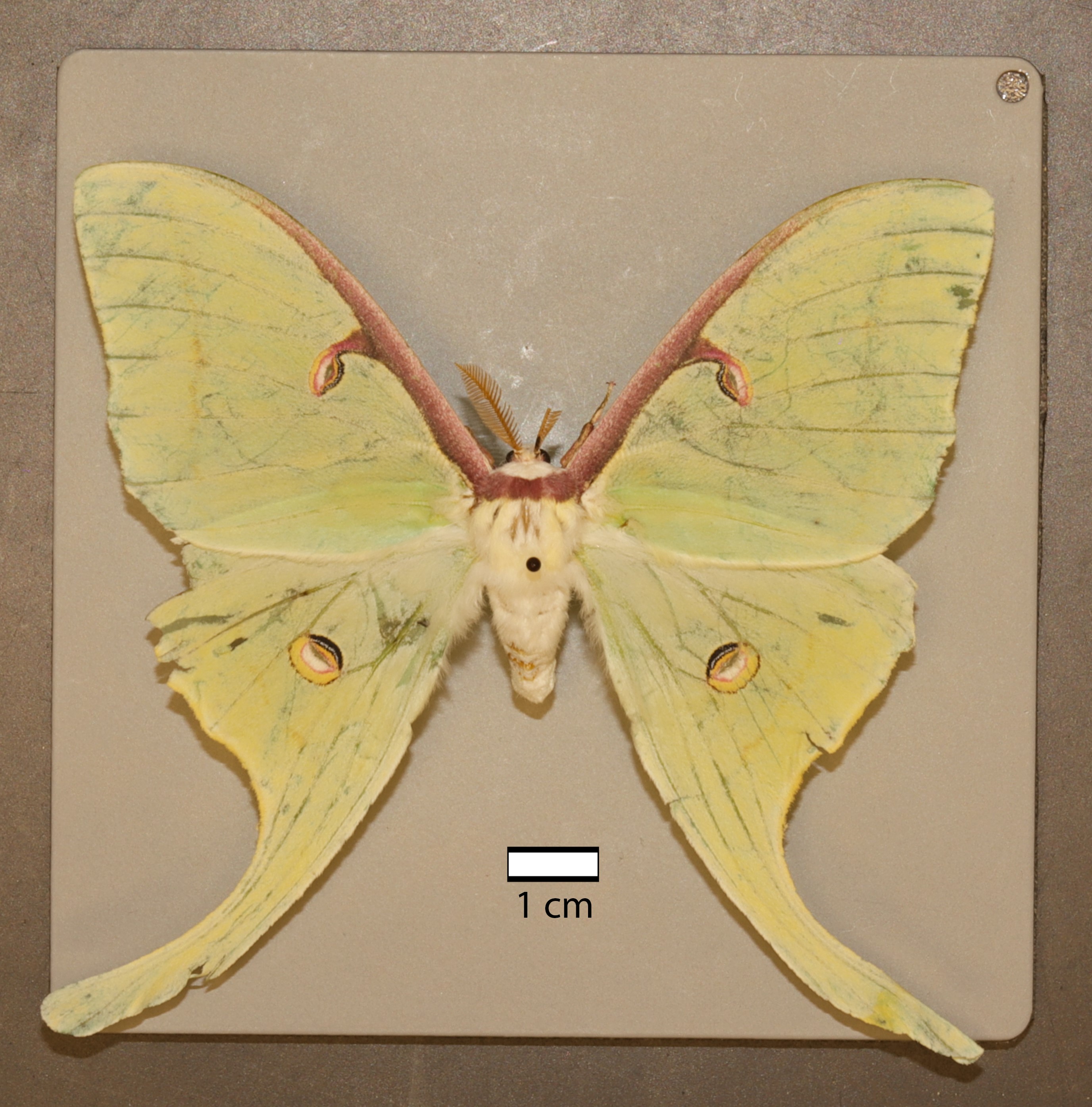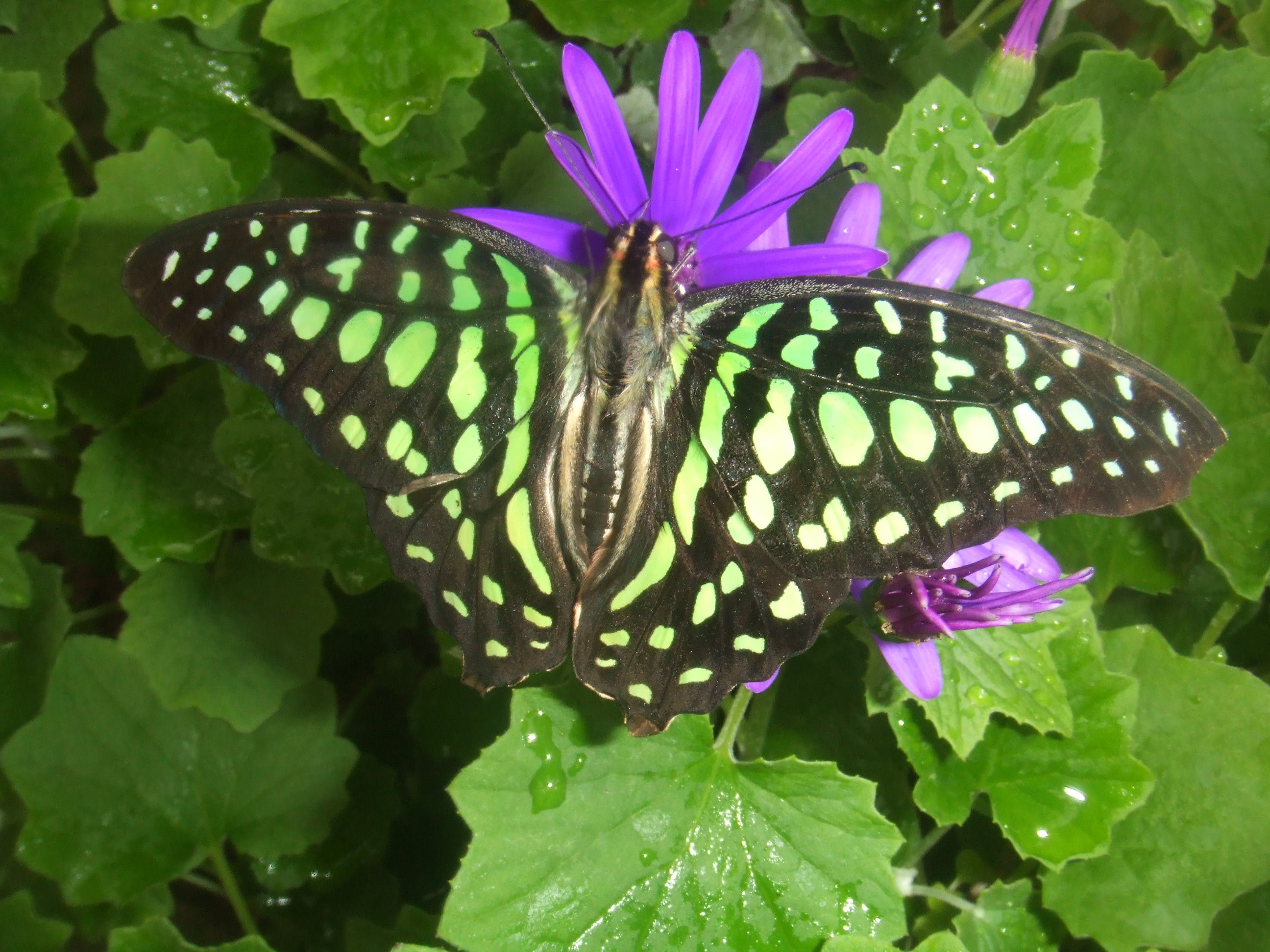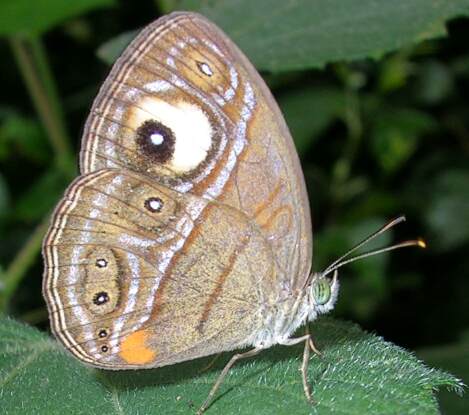|
Luna Moth
The luna moth (''Actias luna''), also called the American moon moth, is a Nearctic moth in the family Saturniidae, subfamily Saturniinae, a group commonly named the giant silk moths. The moth has lime-green wings and a white body. Its caterpillars are also green. Its typical wingspan is roughly , but wingspans can exceed , ranking the species as one of the larger moths in North America. Across Canada, it has one generation per year, with the winged adults appearing in late May or early June, whereas farther south it will have two or even three generations per year, the first appearance as early as March in southern parts of the United States. As defense mechanisms, larvae emit clicks as a warning and can also regurgitate intestinal contents, confirmed as having a deterrent effect on a variety of predators. The elongated tails of the hindwings are thought to confuse the echolocation detection used by predatory bats. A parasitoid fly deliberately introduced to North A ... [...More Info...] [...Related Items...] OR: [Wikipedia] [Google] [Baidu] |
Carl Linnaeus
Carl Linnaeus (23 May 1707 – 10 January 1778), also known after ennoblement in 1761 as Carl von Linné,#Blunt, Blunt (2004), p. 171. was a Swedish biologist and physician who formalised binomial nomenclature, the modern system of naming organisms. He is known as the "father of modern Taxonomy (biology), taxonomy". Many of his writings were in Latin; his name is rendered in Latin as and, after his 1761 ennoblement, as . Linnaeus was the son of a curate and was born in Råshult, in the countryside of Småland, southern Sweden. He received most of his higher education at Uppsala University and began giving lectures in botany there in 1730. He lived abroad between 1735 and 1738, where he studied and also published the first edition of his ' in the Netherlands. He then returned to Sweden where he became professor of medicine and botany at Uppsala. In the 1740s, he was sent on several journeys through Sweden to find and classify plants and animals. In the 1750s and 1760s, he co ... [...More Info...] [...Related Items...] OR: [Wikipedia] [Google] [Baidu] |
Compsilura Concinnata
''Compsilura concinnata'' ( tachinid fly; order Diptera) is a parasitoid native to Europe that was introduced to North America in 1906 to control invasive populations of the exotic spongy moth (''Lymantria dispar''), which primarily infests forests. The fly is an endoparasitoid of insect larvae that lives within its host for most of its life. The parasitoid eventually kills the host and occasionally eats it. It attacks over 200 host species, mainly insects from the orders Coleoptera, Lepidoptera, and Hymenoptera. As ''C. concinnata'' attacks many different types of hosts, it has spilled over from the intended forest systems into other areas such as agricultural fields, parasitizing such cabbage pests as the cabbage looper (''Trichoplusia ni'') and the exotic invasive cabbage white (''Pieris rapae''), as well as other invasive species such as the brown-tail moth (''Euproctis chrysorrhoea''). However, it also attacks native, non-pest insects, including the monarch butterf ... [...More Info...] [...Related Items...] OR: [Wikipedia] [Google] [Baidu] |
Lepidoptera In The 10th Edition Of Systema Naturae
In the 10th edition of ''Systema Naturae'', Carl Linnaeus classified the arthropods, including insects, arachnids and crustaceans, among his class "Insecta". Butterfly, Butterflies and moths were brought together under the name Lepidoptera. Linnaeus divided the group into three genera – ''Papilio'', ''Sphinx'' and ''Phalaena''. The first two, together with the seven subdivisions of the third, are now used as the basis for nine superfamily names: Papilionoidea, Sphingoidea, Bombycoidea, Noctuoidea, Geometroidea, Tortricoidea, Pyraloidea, Tineoidea and Alucitoidea. Themes When naming the nearly 200 species of butterflies known to him at the time, Linnaeus used names from classical mythology as specific name (zoology), specific names. These were thematically arranged into six groups, and were drawn from classical sources including the ''Fabulae'' of Gaius Julius Hyginus and Pliny the Elder's ''Natural History (Pliny), Naturalis Historia''. The first such group was the ''Equites'', ... [...More Info...] [...Related Items...] OR: [Wikipedia] [Google] [Baidu] |
James Petiver
James Petiver () was a London apothecary, a fellow of the Royal Society as well as London's informal Temple Coffee House Botany Club, famous for his specimen collections in which he traded and study of botany and entomology. He corresponded with John Ray and Maria Sibylla Merian. Some of his notes and specimens were used by Carl Linnaeus, Carolus Linnaeus in descriptions of new species. The genus ''Petiveria'' was named in his honour by Charles Plumier. His collections were bought by Sir Hans Sloane and became a part of the Natural History Museum, London, Natural History Museum. Life Born somewhere between 1663 and 1665 in Hillmorton, Warwickshire to James (baptism record from Hillmorton has "Pettyfer", 22 February 1635) and Mary née Elborow, the family moved to London soon after where his father became a haberdasher. After the death of his father in 1676, Petiver was sent to Rugby Free School, sponsored by his maternal grandfather Richard Elborow. Petiver later stated that "I ha ... [...More Info...] [...Related Items...] OR: [Wikipedia] [Google] [Baidu] |
Antenna (biology)
An antenna (plural: antennae) is one of a pair of appendages used for Sensory system, sensing in arthropods. Antennae are sometimes referred to as ''feelers''. Antennae are connected to the first one or two Segmentation (biology), segments of the arthropod head. They vary widely in form but are always made of one or more jointed segments. While they are typically sensory organs, the exact nature of what they sense and how they sense it is not the same in all groups. Functions may variously include sensing tactition, touch, air motion, heat, vibration (sound), and especially insect olfaction, smell or gustation, taste. Antennae are sometimes modified for other purposes, such as mating, brooding, swimming, and even anchoring the arthropod to a substrate (biology), substrate. Larval arthropods have antennae that differ from those of the adult. Many crustaceans, for example, have free-swimming larvae that use their antennae for swimming. Antennae can also locate other group members i ... [...More Info...] [...Related Items...] OR: [Wikipedia] [Google] [Baidu] |
Eyespot (mimicry)
An eyespot (sometimes ocellus) is an eye-like marking. They are found in butterflies, reptiles, cats, birds and fish. Eyespots could be explained in at least three different ways. They may be a form of mimicry in which a spot on the body of an animal resembles an eye of a different animal, to deceive potential predator or prey species. They may be a form of self-mimicry, to draw a predator's attention away from the prey's most vulnerable body parts. Or they may serve to make the prey appear inedible or dangerous. Eyespot markings may play a role in intraspecies communication or courtship; a well-known example is the eyespots on a peacock's display feathers. The pattern-forming biological process (morphogenesis) of eyespots in a wide variety of animals is controlled by a small number of genes active in embryonic development, including the genes called Engrailed, Distal-less, Hedgehog, Antennapedia, and the Notch signaling pathway. Artificial eyespots have been shown to reduce ... [...More Info...] [...Related Items...] OR: [Wikipedia] [Google] [Baidu] |
Vestigial
Vestigiality is the retention, during the process of evolution, of genetically determined structures or attributes that have lost some or all of the ancestral function in a given species. Assessment of the vestigiality must generally rely on comparison with homologous features in related species. The emergence of vestigiality occurs by normal evolutionary processes, typically by loss of function of a feature that is no longer subject to positive selection pressures when it loses its value in a changing environment. The feature may be selected against more urgently when its function becomes definitively harmful, but if the lack of the feature provides no advantage, and its presence provides no disadvantage, the feature may not be phased out by natural selection and persist across species. Examples of vestigial structures (also called degenerate, atrophied, or rudimentary organs) are the loss of functional wings in island-dwelling birds; the human vomeronasal organ; and the ... [...More Info...] [...Related Items...] OR: [Wikipedia] [Google] [Baidu] |
Pupae
A pupa (; : pupae) is the life stage of some insects undergoing transformation between immature and mature stages. Insects that go through a pupal stage are holometabolous: they go through four distinct stages in their life cycle, the stages thereof being egg, larva, pupa, and imago. The processes of entering and completing the pupal stage are controlled by the insect's hormones, especially juvenile hormone, prothoracicotropic hormone, and ecdysone. The act of becoming a pupa is called pupation, and the act of emerging from the pupal case is called eclosion or emergence. The pupae of different groups of insects have different names such as ''chrysalis'' for the pupae of butterflies and ''tumbler'' for those of the mosquito family. Pupae may further be enclosed in other structures such as cocoons, nests, or shells. Position in life cycle The pupal stage follows the larval stage, or in some cases a prepupal stage, and precedes adulthood ('' imago'') in insects with compl ... [...More Info...] [...Related Items...] OR: [Wikipedia] [Google] [Baidu] |
Imago
In biology, the imago (Latin for "image") is the last stage an insect attains during its metamorphosis, its process of growth and development; it is also called the ''imaginal'' stage ("imaginal" being "imago" in adjective form), the stage in which the insect attains maturity. It follows the final ecdysis of the immature instars. In a member of the Ametabola or Hemimetabola, species in which metamorphosis is "incomplete", the final ecdysis follows the last immature or '' nymphal'' stage. In members of the Holometabola, in which there is a pupal stage, the final ecdysis follows emergence from the pupa A pupa (; : pupae) is the life stage of some insects undergoing transformation between immature and mature stages. Insects that go through a pupal stage are holometabolous: they go through four distinct stages in their life cycle, the stages th ..., after which the metamorphosis is complete, although there is a prolonged period of maturation in some species. The imago is the ... [...More Info...] [...Related Items...] OR: [Wikipedia] [Google] [Baidu] |
Cocoon (silk)
A pupa (; : pupae) is the life stage of some insects undergoing transformation between immature and mature stages. Insects that go through a pupal stage are holometabolous: they go through four distinct stages in their life cycle, the stages thereof being egg, larva, pupa, and imago. The processes of entering and completing the pupal stage are controlled by the insect's hormones, especially juvenile hormone, prothoracicotropic hormone, and ecdysone. The act of becoming a pupa is called pupation, and the act of emerging from the pupal case is called eclosion or emergence. The pupae of different groups of insects have different names such as ''chrysalis'' for the pupae of butterflies and ''tumbler'' for those of the mosquito family. Pupae may further be enclosed in other structures such as cocoons, nests, or shells. Position in life cycle The pupal stage follows the larval stage, or in some cases a prepupal stage, and precedes adulthood ('' imago'') in insects with compl ... [...More Info...] [...Related Items...] OR: [Wikipedia] [Google] [Baidu] |
Instar
An instar (, from the Latin '' īnstar'' 'form, likeness') is a developmental stage of arthropods, such as insects, which occurs between each moult (''ecdysis'') until sexual maturity is reached. Arthropods must shed the exoskeleton in order to grow or assume a new form. Differences between instars can often be seen in altered body proportions, colors, patterns, changes in the number of body segments or head width. After shedding their exoskeleton (moulting), the juvenile arthropods continue in their life cycle until they either pupate or moult again. The instar period of growth is fixed; however, in some insects, like the salvinia stem-borer moth, the number of instars depends on early larval nutrition. Some arthropods can continue to moult after sexual maturity, but the stages between these subsequent moults are generally not called instars. For most insect species, an ''instar'' is the developmental stage of the larval forms of holometabolous (complete metamorphism) or ny ... [...More Info...] [...Related Items...] OR: [Wikipedia] [Google] [Baidu] |
Lymantria Dispar
''Lymantria dispar'', also known as the gypsy moth or the spongy moth, is a species of Lepidoptera, moth in the family Erebidae native to Europe and Asia. ''Lymantria dispar'' is subdivided into several subspecies, with subspecies such as ''Lymantria dispar dispar, L. d. dispar'' and ''Lymantria dispar japonica, L. d. japonica'' being clearly identifiable without ambiguity. ''Lymantria dispar'' has been introduced to several continents and is now additionally found as an invasive species in Africa, North America and South America. The List of feeding behaviours#By food type, polyphagous larvae live on a variety of deciduous and Pinophyta, coniferous trees and can cause severe damage in years of mass reproduction. Due to these features, ''Lymantria dispar'' is listed among the 100 of the World's Worst Invasive Alien Species, world's 100 worst invasive alien species. Etymology The etymology of "gypsy moth" is not conclusively known; however, the term is known to have been in use ... [...More Info...] [...Related Items...] OR: [Wikipedia] [Google] [Baidu] |









